-
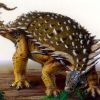 +15 +4
+15 +4Boy helps dig out dinosaur he and his dad found behind grocery store
There are plenty of kids who are utterly and completely fascinated with dinosaurs, but there aren't all that many who can brag about having found one themselves, let alone helped pull it out of the ground.
-
 +3 0
+3 0Brontosaurus Is Officially A Dinosaur Again
Brontosaurus is back! In a new study, paleontologists confirm that the 30-ton sauropod of Flintstones fame is both a distinct genus and species, ending a long argument. It’s an exciting day for dinosaur enthusiasts everywhere—stalwarts who have suffered too long under the oppressive reign of the long-necked Apatosaurus.
-
 +14 +5
+14 +5Brontosaurus Is Officially A Dinosaur Again
After decades of debate, scientists just gave Brontosaurus back to the people. Eat your heart out, Apatosaurus.
-
 +25 +5
+25 +5Dartmouth Scientists Show New Evidence That Comet Killed Dinosaurs, Not Asteroid
Some 66 million years ago, a giant hurtling mass killed off almost all the dinosaurs and around 70 percent of all other species living on Earth. Most scientists think that the extinction event was an asteroid. Professors Jason Moore and Mukul Sharma of the Department of Earth Sciences at Dartmouth in New Hampshire say that a high-velocity comet killed off the dinosaurs.
-
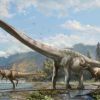 +22 +2
+22 +2Long-necked 'dragon' discovered in China
University of Alberta paleontologists including PhD student Tetsuto Miyashita, former MSc student Lida Xing and professor Philip Currie have discovered a new species of a long-necked dinosaur from a skeleton found in China.
-
 +14 +5
+14 +5The Wrists of Birds Reveal Evolution Undoing Itself
Contrary to earlier claims, a new study shows that evolution may be reversible
-
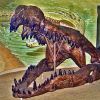 +13 +2
+13 +2New 'Predator Crocodile' Predecessor of Dinosaurs Unearthed in Africa
Scientists have discovered a new species of giant carnivorous reptile that trod the Earth long before the emergence of dinosaurs. Dubbed Nundasuchus, a mashup of Greek and Swahili that loosely means "predator crocodile," the 9-foot long creature's standout features were teeth like steak knives, bony back plates and legs that lay underneath its body, say researchers at Virginia Tech. It was a member of a class of large reptiles...
-
 +1 +1
+1 +1Was this Nessie's ancestor? Giant prehistoric monster roamed Scottish waters - Telegraph
A new species of dolphin-like sea creature named 'Dearcmhara shawcrossi' was discovered in the Isle of Skye
-
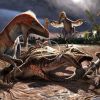 +16 +1
+16 +1Utah's Dinosaur 'Death Trap' Reveals Trove of Giant Predators
A nine-ton block of sandstone that was pulled from a Utah mountain late last year holds the biggest fossil trove ever found of the giant predatory dinosaur known as Utahraptor. Covered in feathers, with a huge sickle claw on each second toe, Utahraptor looked like a pumped-up version of the Jurassic Park star Velociraptor. The fossils might help resolve a long-standing debate about whether these predators hunted in groups. In the Jurassic Park films...
-
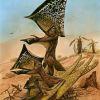 +2 +1
+2 +113 of the biggest dinosaur discoveries in 2014
It’s been a big year for dinosaurs – quite literally when the new “biggest dinosaur ever” Dreadnoughtus was uncovered in South America.
-
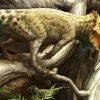 +21 +4
+21 +4Skull of oldest horned dinosaur in North America found
Fossil from tiny plant eater, Aquilops americanus, suggests horned dinosaurs originated in Asia
-
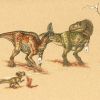 +19 +2
+19 +2The Cretaceous Tortoise and Hare
Once upon a time, in the autumn of 2011, I submitted an artwork requested by one Scott Persons of the University of Alberta via Art Evolved... Three years later, the resulting set of three illustrations — a race between an Olorotitan and a Tarbosaurus — was finally published in the press release for a study of hadrosaur locomotion by Dr. Phil Currie and Scott Persons, which a few readers may already be familiar with, either independently or via the Chasmosaurs Facebook page.
-
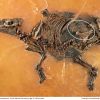 +6 +1
+6 +1Mind-Blowing Fossil Preserves Tiny Horse Carrying Unborn Foal | Observations, Scientific American Blog Network
BERLIN: The former oil shale mining site of Messel, near Frankfurt, Germany, is well known for its spectacular fossils of organisms that lived between 47 million ...
-
 +15 +3
+15 +3A temple to 860 lost species planned for Jurassic coast
Tomorrow afternoon a tall, elderly gentleman will deliver a short eulogy to past life on Earth while standing on the Jurassic coast of southern England, and in the process begin an ambitious project to remember the 860 species known to have become extinct over the previous five centuries.
-
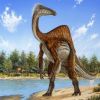 +18 +1
+18 +150 years after finding its giant arms, scientists have put this strange dinosaur’s pieces together
A long-mysterious dinosaur now has a nearly complete skeleton, revealing a form much more unusual than scientists had predicted.
-
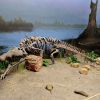 +21 +6
+21 +6Fossilised bite marks show how ancient reptiles battled across land and water
Some 220m years ago, the Triassic Period marked the beginning of the age of dinosaurs. But by the time the earliest dinosaurs were just starting to appear in the fossil record, it was distant relatives of crocodiles that reigned over both the water and land.
-
 +20 +4
+20 +4"Missing Links" Found between Birds and Dinosaurs
Birds didn't evolve in one fell swoop from their dinosaur ancestors, suggests a newly constructed dinosaur family tree showing our feathery friends evolved very gradually, at first.
-
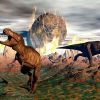 +29 +7
+29 +7Even Armageddon has a silver lining, say scientists studying dinosaur extinction
Even Armageddon can have a silver lining, according to a new discovery about what followed the massive meteor impact that wiped out the dinosaurs. Around 66 million years ago, a 10-kilometre wide asteroid or comet smashed into the Earth off Mexico's Yucatan peninsular, producing a crater 150 kilometres across.
-
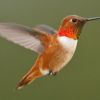 +1 +1
+1 +1Dinosaurs lost the ability to taste sugar; hummingbirds re-evolved it
Chickens are not fussy eaters. Any object resembling food is worth an exploratory peck. But give a chicken the choice between sugary sweets and seeds, and they will pick the grains every time. This is odd. Many animals, including our own sugar-mad species, salivate for sugar because it is the flavor of foods rich in energy. New research suggests that many birds’ lack of interest in sugar is the result of genes inherited from their dinosaur ancestors.
-
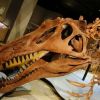 +24 +6
+24 +6Dinosaur predator bigger than T-rex found
The biggest-known dinosaur predator to stalk the planet earth looked rather like a monster daschund, but with 7-meter tall spines on its back.
Submit a link
Start a discussion




















